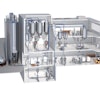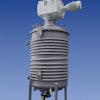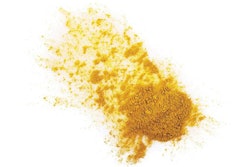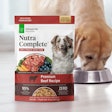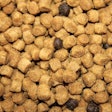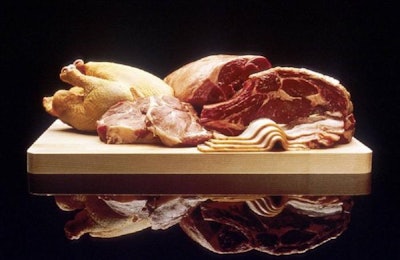
A prevailing belief among dog owners and dog food rating websites is that dogs are carnivores and need to eat meat, because that’s what they would eat “naturally” or “in the wild.” Where would they get this idea? In many cases, from pet food companies themselves, who use prominent claims like “high in fresh meat” and continually push the envelope on levels of meat. (Full disclosure: We’re jumping on this bandwagon and focusing Petfood Innovation Workshop on meat, though it will also cover novel proteins; see p. 6.)
Is this approach accurate and based on science? Most arguments I have read for feeding dogs as carnivores or with a meat-first philosophy seem lacking in scientific reasoning or sources. On the other hand, I have seen nutrition experts use science and research to make the case that dogs are actually omnivores—as are their most direct ancestors, wolves. For example, see the chapter “Dogs are Carnivores, Right?” in Dog Food Logic by Linda Case. (Her answer is no; read more at https://goo.gl/omKBpL.)
Case’s argument, no matter how well reasoned or supported by fact, is not likely to change the opinions of people who fervently believe dogs are carnivores and need high levels of fresh, whole meat. Even for them, however, another question remains: Is this approach to feeding dogs sustainable?
Dogs, and cats, have a fierce competitor for all that meat: humans. According to the Organization for Economic Cooperation and Development, the average American adult ate 198 pounds of meat in 2014; the average globally was 75 pounds. By 2024, those numbers are projected to increase to 207.5 and 78.3 pounds, respectively, a rise of more than 4% per person.
While some consumers and human food producers are turning to alternative sources of protein, the demand for meat continues to accelerate. Meanwhile, pet food companies have not been shy about using novel protein sources, often because of perceived pet allergies or dietary intolerances—think rabbit, kangaroo, even insects—but scaling up supply of those ingredients is not yet financially feasible. Even if that changes, the constant drumbeat for high meat and whole meats could turn many pet owners and influential online pet food rating sites away from products featuring nontraditional proteins.
Will there come a day when there simply isn’t enough meat?

